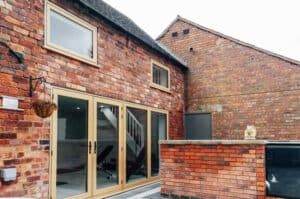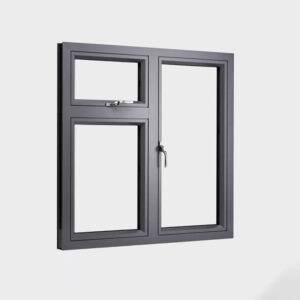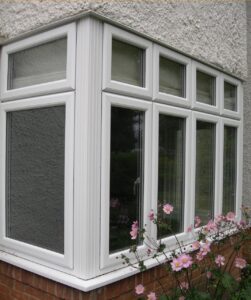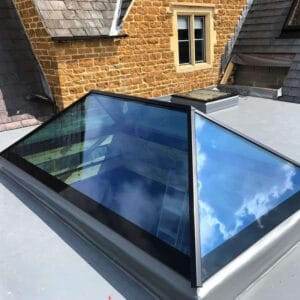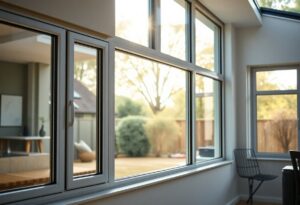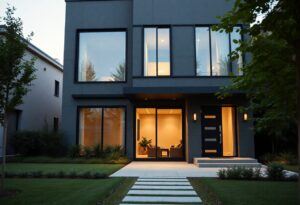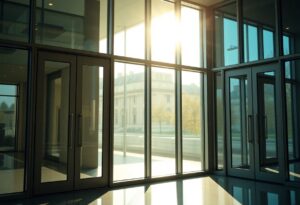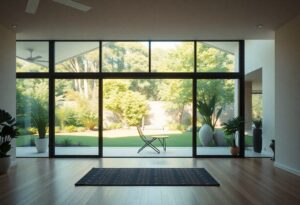With the growing popularity of French doors, understanding the science behind uPVC profiles is important for ensuring your investment lasts. uPVC offers several advantages, such as enhanced thermal insulation and resistance to weathering, which significantly contributes to the structural stability of your doors. In this blog post, you’ll discover how the engineering of uPVC profiles can influence performance and longevity, while also addressing concerns, like Can I trust “American uPVC” Windows?. Equip yourself with knowledge to make informed decisions for your home.
Understanding uPVC Profiles
For those delving into the construction of French doors, understanding uPVC profiles is necessary. These profiles serve as the backbone of your door’s structure, providing strength and durability. With their innovative design, they not only offer aesthetic appeal but also ensure a long-lasting and secure installation, making them a popular choice among homeowners.
Composition of uPVC
Beside its structural advantages, uPVC, or unplasticised polyvinyl chloride, is made from a combination of polymer resins and additives that enhance its stability and performance. This composition enables it to withstand various environmental conditions without compromising its integrity, making it an ideal material for door manufacturing.
Benefits of uPVC in Door Manufacturing
Against traditional materials, uPVC boasts numerous benefits in door manufacturing. Its resistance to weathering, low maintenance requirements, and excellent thermal insulation properties make it an exceptional choice. Additionally, the material is inherently non-toxic and recyclable, aligning well with environmentally conscious practices.
Understanding the benefits of uPVC in door manufacturing amplifies your choice for durable home installations. You can enjoy enhanced insulation that reduces energy costs, as well as resistance to moisture and corrosion that prolongs the lifespan of your doors. With minimal upkeep needed, uPVC profiles not only ensure safety and strength but also allow you to focus on enjoying your home rather than constant maintenance.

Structural Stability Factors
Any discussion on the structural stability of French doors must consider several key factors that contribute to their overall performance:
- Frame Material
- Reinforcement
- Design Geometry
- Installation Quality
Recognising these elements ensures that your French doors not only look appealing but also function safely and effectively.
Design Considerations
Around the design of your French doors, a variety of considerations play a significant role in achieving stability, such as the choice of profiles and the configuration of the panels. The aesthetic design must cohesively integrate with structural functionality to prevent distortions and misalignments.
Thermal and Weather Resistance
Against fluctuating weather conditions, the thermal and weather resistance of your French doors is vital to maintaining comfort in your home. Enhanced insulation properties prevent unwanted heat loss and protect against moisture ingress.
The materials used in your French doors should demonstrate excellent thermal performance, such as multi-chambered uPVC profiles that enhance insulation, resulting in lower energy bills. They are designed to withstand extreme weather, ensuring that water and air cannot penetrate. Additionally, these profiles are often treated to resist UV damage, extending their lifespan and maintaining their appearance. Understanding and appreciating these thermal barriers provide you with peace of mind, knowing your home remains safe and comfortable throughout the year.
Manufacturing Process of uPVC Profiles
Assuming you are keen on understanding the intricacies of uPVC profiles, the manufacturing process begins with the careful selection of raw materials, predominantly polyvinyl chloride (PVC) mixed with stabilisers and modifiers. This meticulous formulation ensures the Importance of Reinforced Frames in uPVC Windows is upheld, enhancing the profiles’ durability and thermal efficiency.
Extrusion Techniques
Before the profiles take shape, the extrusion process is initiated by heating the PVC mixture until it becomes malleable. It is then forced through a specially designed die, producing long lengths of uPVC profiles that can be customised to meet specific requirements.
Quality Control Procedures
Manufacturing involves a series of stringent quality control procedures that ensure every uPVC profile meets established standards. Each batch undergoes thorough testing for physical properties, including thermal insulation and structural integrity, to guarantee safety and performance.
Another vital aspect of quality control is the regular inspection of your profiles for defects and inconsistencies, which could compromise their functionality. The use of advanced technologies in these procedures allows for the identification of potential issues early on, ensuring that only flawless profiles reach the market, ultimately giving you confidence in your investment.

Performance Testing
After assessing the design and materials used in uPVC profiles, the next step involves performance testing. This phase evaluates how well your French doors will withstand daily use and environmental stresses. Testing covers various parameters, including resistance to wind, water ingress, and thermal performance, ensuring that your doors not only look great but also deliver reliable functionality over time.
Strength and Durability Tests
At this stage, your French doors undergo strength and durability tests to establish their capacity to bear loads and resist impacts. These tests simulate real-world conditions, which means that the uPVC profiles are subjected to various forces, helping you ascertain that your doors can handle the rigours of everyday life without compromising their structural integrity.
Long-term Performance Evaluation
Durability is a key focus in the long-term performance evaluation of your French doors. This stage assesses how well your doors perform over an extended period, considering factors like UV exposure, extreme temperatures, and moisture. Continuous monitoring and assessment during this evaluation phase ensure that any potential weaknesses are identified early, offering you peace of mind regarding your investment.
Performance evaluations focus on comprehensive testing over time to ensure your uPVC profiles maintain their integrity. This involves monitoring various performance indicators, including thermal efficiency, maintaining seal integrity, and ensuring that the door operation remains smooth. Effective long-term evaluation procedures will safeguard you from premature faults and enhance your confidence in the durability and reliability of your French doors.
Comparing uPVC with Other Materials
Your choice of material for French doors plays a significant role in performance and longevity. Below is a comparison of uPVC with other materials commonly used in door construction:
| uPVC | Durable, low-maintenance, energy-efficient, but may expand over time. |
| Wood | Beautiful, provides good insulation, but can warp and requires regular maintenance. |
| Aluminium | Strong and sleek, with minimal maintenance, but less energy-efficient than uPVC. |
uPVC vs. Wood
Wood offers aesthetic appeal and insulation properties, but it requires more maintenance. You must treat and paint wood regularly to prevent rot, while uPVC lends itself to a more low-maintenance lifestyle.
uPVC vs. Aluminum
An aluminium frame is robust and provides a contemporary look; however, it can be less energy-efficient than uPVC. Aluminium does not insulate heat as well as uPVC, leading to higher energy costs over time.
With aluminium doors, you might face increased risk for condensation and heat transfer, making uPVC a better choice for energy savings. Furthermore, uPVC is typically more cost-effective and offers greater thermal efficiency when compared to aluminium options. For further details, you can check this resource on Do UPVC windows provide any structural support?.
Installation Best Practices
Once again, the success of your French door installation significantly relies on adhering to best practices. Taking the time to ensure a precise fit, proper alignment, and secure fastening will enhance the overall durability and aesthetic appeal of your doors. Be thorough in your measurements and utilise suitable tools to guarantee a seamless installation process that optimises the functionality of your sleek uPVC profiles.
Preparing for Installation
Preparing for installation is a fundamental step that sets the tone for a successful project. Begin by gathering all necessary tools and materials, including shims, screws, and waterproof sealants. Carefully measure your doorframe and assess the surrounding area for any potential obstructions. This proactive approach will help you sidestep unexpected challenges, enabling a smoother installation experience.
Common Mistakes to Avoid
To ensure your installation is a success, you must avoid several common mistakes that could compromise your French doors. Pay attention to improper measurements, inadequate sealing, and neglecting to check for level surfaces. These oversights can lead to significant issues down the line.
Installation errors can manifest in various ways that impact both aesthetics and functionality. For instance, if you fail to ensure your door is level and plumb, it may not close correctly, leading to gaps that compromise energy efficiency and invite moisture infiltration. Furthermore, an inadequate sealing between the frame and the wall can result in heat loss. Therefore, investing time to correct these aspects during installation can prevent inconvenient and costly repairs in the future.
Conclusion
Ultimately, understanding the science behind uPVC profiles enhances your appreciation for the structural stability of French doors. By recognising the properties of uPVC, you can make informed decisions regarding the durability and performance of your doors, ensuring they withstand the test of time and environmental factors. With this knowledge, you can feel confident in your choices, leading to enhanced aesthetics and security in your home.
FAQ
Q: What are uPVC profiles and why are they important in French doors?
A: uPVC, or unplasticised polyvinyl chloride, profiles are the framework that forms the structure of French doors. They are necessary because they provide durability, insulation, and resistance to weathering. Their structural integrity ensures that the doors can withstand the elements while maintaining energy efficiency in the home.
Q: How does the design of uPVC profiles contribute to the stability of French doors?
A: The design of uPVC profiles plays a significant role in the stability of French doors. They are engineered to incorporate multi-chambered structures that enhance strength and reduce the weight of the door system. This innovative design helps to prevent warping and bowing over time, ensuring that the doors function smoothly and securely.
Q: What makes uPVC profiles different from other materials used in door construction?
A: Unlike traditional materials such as wood or aluminium, uPVC profiles offer numerous advantages. They are resistant to rot and corrosion, do not require painting, and provide excellent thermal insulation. Additionally, uPVC profiles are less prone to expansion and contraction due to temperature changes, which contributes to their long-term performance in French doors.
Q: Are uPVC profiles environmentally friendly?
A: Yes, uPVC profiles can be environmentally friendly. They are 100% recyclable, which helps to reduce waste. Many manufacturers adhere to sustainable practices during production, and new technologies are continually being developed to improve the eco-friendliness of uPVC materials. Choosing uPVC for French doors can be a responsible option for environmentally conscious consumers.
Q: How do I maintain the structural integrity of uPVC profiles in my French doors?
A: Maintaining the structural integrity of uPVC profiles is relatively straightforward. Regular cleaning with a mild detergent and water will help to prevent build-up that could affect performance. Additionally, checking seals and gaskets periodically for wear ensures that the doors remain airtight and energy-efficient. If any issues arise, professional inspection and maintenance can extend the lifespan of the uPVC profiles.


